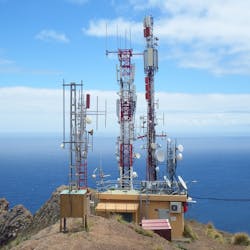Nokia says its Bell Labs group has successfully conducted a proof-of-concept demonstration of symmetrical 10-Gbps DOCSIS 3.1 (at least in one scenario) via a technology Nokia has dubbed XG-CABLE. The technology combines echo cancellation and interference management approaches in a similar fashion to that Nokia and Bell Labs also have applied to VDSL vectoring and G.fast. The proof-of-concept demonstration explored the use of XG-CABLE in two scenarios. The first recreated a point-to-point coax drop of 100 m, in which symmetrical 10-Gbps transmission successfully occurred over 1.2 GHz of spectrum. In the second scenario, Nokia Bell Labs recreated a multi-tap N+0 architecture. Here, the researchers achieved symmetrical 7.5-Gbps transmission. Nokia sources who briefed BTR were not able to reveal how long this link ran or how many taps were involved. The echo cancellation techniques limit interference between transmit and receive channels in a full-duplex transmission scenario. The additional interference management techniques limit interference between cable modems. Although not applied in an identical fashion, the Nokia sources said the technologies are similar to what Nokia Bell Labs developed to enable VDSL2 with vectoring as well as to create the high-speed version of G.fast that Nokia calls XG-FAST. So the approaches are proven, the sources say. The Nokia sources predict the additional bandwidth could find initial use in support of business services and mobile backhaul. They added that, with the right spectrum planning, XG-CABLE could coexist with legacy DOCSIS 3.0. Before all that happens, of course, the technology needs to reach the field. The company sources underscored that the demonstration was a proof of concept. Nokia sees the concepts demonstrated as applicable to CableLabs’ symmetrical DOCSIS 3.1 project (see "CableLabs Talking Symmetrical DOCSIS 3.1" and "Symmetrical DOCSIS 3.1: How Does it Work?"), and the sources acknowledged that a commercial version of the technology would have to conform to any specifications CableLabs creates. That said, the sources predicted a commercial product using the technology might be available in the 2020 timeframe.





